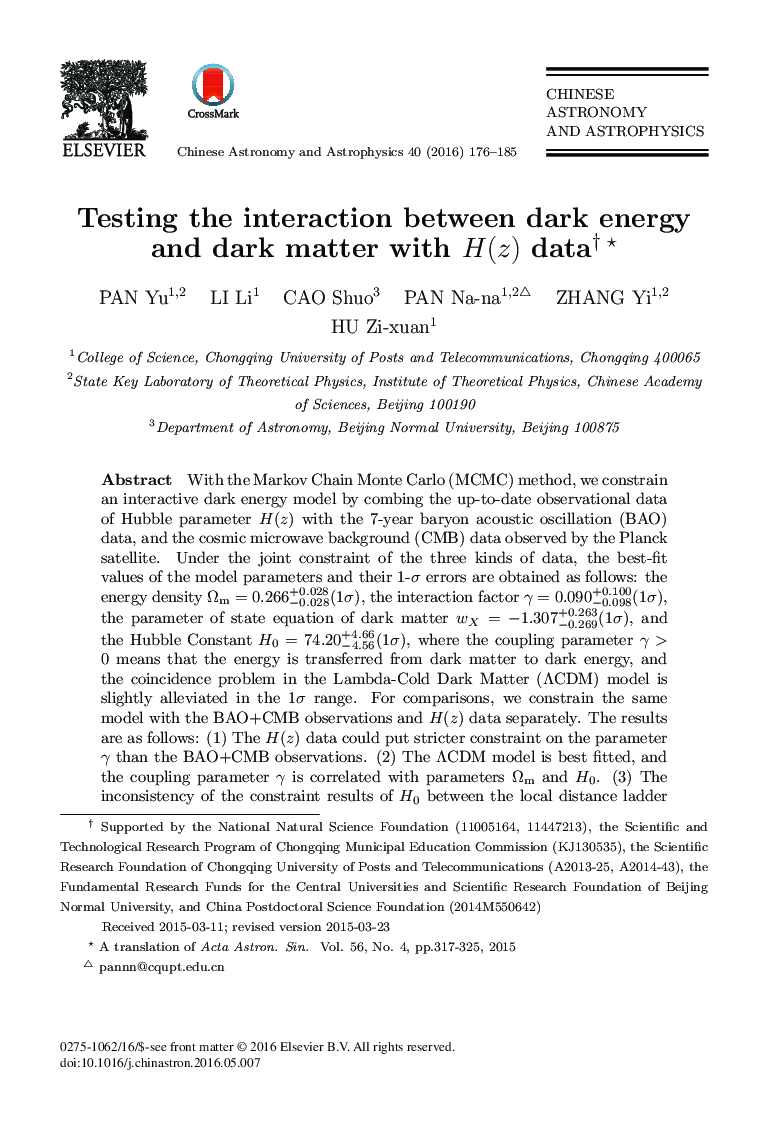| Article ID | Journal | Published Year | Pages | File Type |
|---|---|---|---|---|
| 1771678 | Chinese Astronomy and Astrophysics | 2016 | 10 Pages |
With the Markov Chain Monte Carlo (MCMC) method, we constrain an interactive dark energy model by combing the up-to-date observational data of Hubble parameter H(z ) with the 7-year baryon acoustic oscillation (BAO) data, and the cosmic microwave background (CMB) data observed by the Planck satellite. Under the joint constraint of the three kinds of data, the best-fit values of the model parameters and their 1-σ errors are obtained as follows: the energy density Ωm=0.266-0.028+0.028(1σ), the interaction factor γ=0.090-0.098+0.100(1σ), the parameter of state equation of dark matter wX=-1.307-0.269+0.263(1σ), and the Hubble Constant H0=7420-4.56+4.66(1σ), where the coupling parameter γ > 0 means that the energy is transferred from dark matter to dark energy, and the coincidence problem in the Lambda-Cold Dark Matter (ΛCDM) model is slightly alleviated in the 1σ range. For comparisons, we constrain the same model with the BAO+CMB observations and H(z) data separately. The results are as follows: (1) The H(z) data could put stricter constraint on the parameter γ than the BAO+CMB observations. (2) The ΛCDM model is best fitted, and the coupling parameter γ is correlated with parameters Ωm and H0. (3) The inconsistency of the constraint results of H0 between the local distance ladder measurements and the Planck observations can be alleviated after taking account of the interaction between dark energy and dark matter.
